Day :
- Speaker Session I
Materials Science & Engineering | Nanotechnology in Materials Science | Batteries and Energy Materials | Mining, Metallurgy and Materials Science | Surface Science and Engineering | Electrical, Optical and Magnetic Materials | Materials Chemistry and Physics
Location: The Five Spot Room

Chair
Jun Ding
National University of Singapore, Singapore
Session Introduction
Jun Ding
National University of Singapore, Singapore
Title: High-magnetization oxide spinel ferrite films
Time : 12:00-12:25

Biography:
Jun Ding is Professor at Department of Materials Science & Engineering, National University of Singapore. He has been working on functional materials (particularly magnetic materials) over 25 years. His current research is focusing on additive manufacturing (3D printing) with the emphasis of advanced functional and multi-functional devices
Abstract:
Tetragonal half-metallic magnets find broad applications in spintronics owing to the optimized magnetization and magnetic anisotropy. Herein, a low-temperature thermal decomposition method is utilized to grow new stabilized tetragonal ferrite films. Tetragonal Fe3O4-based film possesses high saturation magnetizations of ~1 Tesla and tetragonal Co-doped Fe3O4-based film exhibits high energy product of ~10.9 MGOe with perpendicular magnetocrystalline anisotropy. A combined experimental and first-principles study reveals that carbon interstitials (CiB) and oxygen vacancies (VO) form CiB-VO pairs which stabilize the tetragonal phase and meanwhile enhancing the magnetization. The high magnetization is attributed to the spin flipping on FeA as a result of the CiB-VO-induced atomic migration and lattice distortion. The novel stabilized tetragonal ferrite films with high and tunable magnetization and magnetic anisotropy largely extends the applications of half-metallic spinel ferrites and novel energy harvest devices.
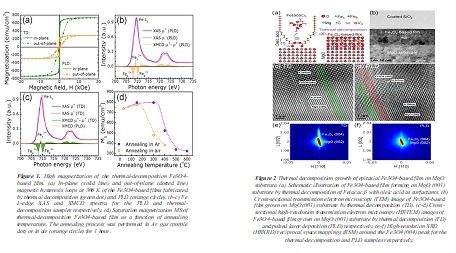
Philippe Da Silva
Valeo THS, France
Title: Impact of the residual flux reduction on the internal corrosion behavior for the automotive brazed heater cores
Time : 12:25-12:50

Biography:
Philippe Da Silva is 36 years old and has been working for VALEO since 2006. He is a VALEO material expert since 2011. He is specialized in aluminum exchangers and also in corrosion tests. He has written 4 publications on the corrosion topics applied on automotive brazed Heat Exchangers.
Abstract:
The Nocolok® flux is used in the worldwide technology of heat exchangers to remove the aluminum oxide during the controlled atmosphere brazing. This flux (mixture of Potassium (K), Aluminum (Al), Fluorine (F)) is known to react with corrosion inhibitors of coolants. Furthermore, the several temperature cycles, the coolant ageing and the inhibitors consumption have an impact on the internal corrosion behavior of heat exchangers. That is the reason why car manufacturers ask to reduce the residual flux amount inside parts. The challenge of VALEO is to minimize the flux quantity while maintaining a good brazing quality and also staying at high level of robustness and reliability. A method to quantify the residual flux inside exchangers has been developed. The impact of the residual flux reduction on the internal corrosion behavior has been studied thanks to an internal corrosion reliability test developed by VALEO. This test called DECLIC (Degraded Coolant for Internal Corrosion test) will give us the benefit or not to reduce the flux quantity inside parts during the brazing process.
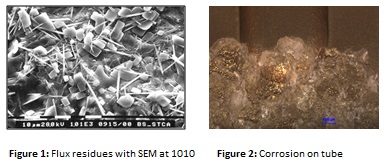
Dilmurat Abliz
Clausthal University of Technology, Germany
Title: Influence of boehmite nanoparticle on the curing kinetics and rheology of an epoxy matrix for liquid composite molding process
Time : 12:50-13:15

Biography:
Dilmurat Abliz is a PhD student in the Clausthal University of Technology and working as a scientific assistant since 2012 in the Institute of Polymer Materials and Plastics Engineering, TU Clausthal. His main research focus lies in the material, process and property characterization and modelling/simulation regarding nanoparticle-modified epoxy matrix for application in high-performance fiber-composites. This work originates from the Research Group Program FOR 2021“Acting Principles of Nano-Scaled Matrix Additives for Composite Structures” funded by the German Research Foundation (DFG: ZI 648/42-1; ZI 648/43-1).
Abstract:
Modifying the resin matrix with nano-scale additives is especially attractive in the liquid composite molding (LCM) processes in order to increase the matrix performance, by effectively reducing the shrinkage and improving the mechanical properties without compromising the flow and impregnation behavior of the matrix. Main target of this paper is to characterize and model curing kinetics and rheological behavior of the boehmite (AlOOH) nanoparticle-modified epoxy matrix, regarding to the application in LCM processes for fabrication of fiber-reinforced plastics (FRP), which are not yet covered in the literature.
Based on the curing behavior and rheological characteristics, the curing kinetics and rheology of the boehmite nanoparticle-filled epoxy matrix is modelled by Kamal-Sourour and Castro-Macosko models, separately. Based on the cure kinetics, the boehmite nanoparticles showed an accelerating effect on the reaction up to a cure degree of about 0.82. However, then the Tg of the reference system becomes higher than that particle-filled suspensions, indicating an inhibiting effect of the nanoparticle on the cure and negative effect on Tg. The final Tg value showed a reverse trend with the particle content: the higher the particle concentration, the lower the final Tg, indicating a decreased network stability of the particle filled suspension compared to that by the reference system. According to the rheological investigations, the effective processing time is inevitably decreased by about 28 % at 10 wt% and 40 % at 15 wt% boehmite concentration. The effects of the nanoparticles on the curing kinetics and rheology of the matrix exert extra requirements and restrictions on the processing strategies and parameters considering the decreased impregnation length for the fabrication of FRP structures.
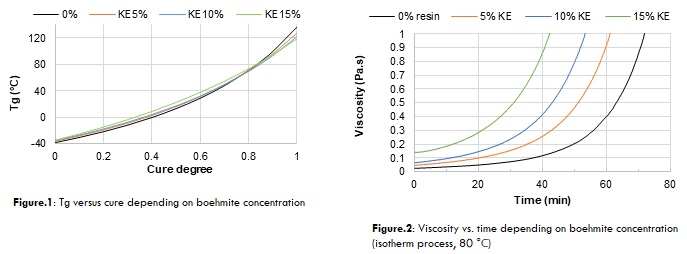
Vincent Renault
Valeo THS, France
Title: Accelerated corrosion test for exhaust gas recirculation exchangers
Time : 14:15-14:40

Biography:
Vincent Renault is 29 years old and has been working for VALEO since 2007. He is specialized in materials and corrosion test bench development. He is metallurgical department manager for VALEO Thermal Systems materials laboratory.
Abstract:
The VALEO strategy focuses on two areas. First is to develop innovative technologies related to the reduction of CO2 emissions and intuitive driving. The second is the geographical expansion in high growth regions. In the field of new heat exchanger integration within the EGR LP loops such as the Charge Air Cooler (CAC), it appeared that the condensation of aggressive chemical solution can occur. This condensation can lead to part material corrosion and that may create some issues in the field (leak, loss of thermal performance…).
Different studies have already been carried out in order to develop specific tests for corrosion resistance evaluation. Most of these tests concern only small samples tested by immersion. The final product in its vehicle architecture could not be tested. The project was to develop and adapt a new Charge Air Cooler heat exchangers test bench for corrosion resistance evaluation of. A patent has been submitted on this specific test bench (n° FR3012217 A1). Thanks to the capabilities of the test benches, we reduced test duration considerably compared with other test methodologies such as immersion tests. Specific gas flow rate, condensate chemical flow rate injection and temperature were adapted to reach dew points leading to condensation of chemical mixtures inside the CAC. The repeatability of the corrosion test results was investigated. Condensate mixtures can be very aggressive for CAC corrosion resistance. Test bench conception in stainless steel and PTFE allow us to use very low or very high pH. That is necessary to adapt the condensate mixture with the real condensates extracted during engine tests by OEM. We compared the corrosion test results obtained on the CAC following the corrosion tests with parts from the vehicle. Then, test duration and the vehicle mileage were correlated in order to draw a reliability curve.
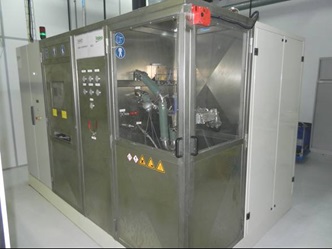
Sampath Kumar M C
B.M.S College of engineering Bangalore, India
Title: Cleaner production practices for resource optimisation
Time : 14:40-15:05

Biography:
Sampath Kumar M.C. is faculty at the civil engineering Department at B.M.S College of engineering Bangalore, India. He is involved in Teaching, research and environmental application activities. His area of interest is in the field of remote sensing and GIS for natural resources conservation.
Abstract:
This Paper describes the studies conducted on application of best practices in cleaner production at industry level and its visible beneficial impact on the surrounding environment and ground water.The industrial zone had many medium and large scale industries and posing many challenges in resource utilisation.The studies involved many industry specific issues such as non compliance to adoption of green chemistry concepts to process and impediments in application of cleaner technologies to various activities in the industries.The charecterisation included evaluation of energy consumption,hazardous waste management and water quality indices for ground water.The studies were supplemented with estimation of carbon credits and justified by environmental economics.Studies were made effective by creating a decision making model and support system using remote sensing and GIS tools for locating the industries and optimizing resource conservation.Such green initiatives have brought a distinct change in work practices in industrial areas and community at large.
Anne-Gaëlle Villemiane
Valeo THS, France
Title: The determining role of brazing clad in aluminium material fatigue behavior for automotive exchanger applications
Time : 15:05-15:30

Biography:
Anne-Gaëlle Villemiane is an expert in fatigue and fractography. She has been working for Valeo for 10 years and she is head of the Material Laboratory. She has worked on 3 phDs specialising in fatigue and has written 8 publications on the topic applied on automotive problematic. She has obtained a phD in 2006 on the determination of the niobium effect on the oxidation mechanisms of ternary titanium aluminides. This study was conducted from first seconds (20 s) to long term oxidation times (2000 h).
Abstract:
Economic and environmental drivers are leading to exchanger weight reduction for automotive applications. The consequence is a material downgauging and some critical conditions reached. One of the exchanger’s main failure modes is induced by transient differential dilatations between the exchanger components. In this work, a detailed characterization of the cyclic damage mechanisms in car heat exchangers has been undertaken in order to improve their reliability.
The studied material is a very thin (<0.3 mm) aluminum sheet composed of 3 layers (4XXX /3XXX/ 4XXX) (figure 1) compared to the same aluminium sheet made of 1 layer (3XXX), brazed in similar conditions to those of real components. Fatigue tests at constant stress amplitude have been performed at room temperature to show the influence of the clad in the fatigue resistance. Tensile properties between the clad alloy and the unclad alloy are strictly identical. However, the Wölher curve shows a high fatigue resistance for the unclad material compared to the cladded one. (Figure 2).
Fractography analysis on the 3 layer alloy reveals that the crack initiation is intergranular on the clad side and occurs on the specimen face because the clad is harder than the core which weakened the grain boundaries leading to multifissuration initiation and propagation. Cracks stopped for about 50% of the fatigue life then there is a transgranular propagation of the crack until failure. Concerning the unclad material, the elements Cu, Fe, Si, Mn and Ti are better distributed in the alloy thickness leading to a less modified surface state and decreasing the site initiation number and therefore the multifissuration. Thanks to microstructure, tomography and surface rupture analysis a fatigue damage mechanisms can be proposed, showing the residual clad layer key influence on the crack initiation.
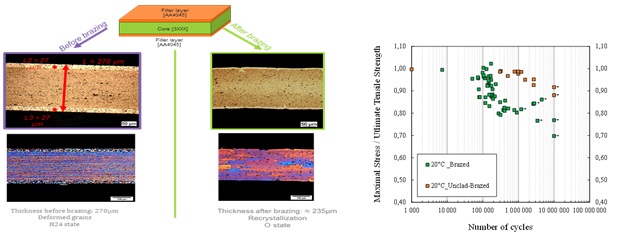
Anamika Vitthal Kadam
D .Y. Patil College of Engineering and Technology, India
Title: Hydrothermally grown nanoflowered WO3 thin films on etched ITO for electrochromic studies
Time : 15:30-15:55

Biography:
Anamika Vitthal Kadam has completed her PhD at the age of 31 years from Bharti Vidyapeeth University, Pune, MH, and India. She is working as Assistant Prof in D.Y. Patil Engg and Tech, Kolhapur, MH, India and having guideship of D.Y. Patil University. Se has published more than 25 papers in national and international journals and achieved a project under young scientist scheme with one minor research project.
Abstract:
Herein, we present, for a first time, an electrochromic film of WO3 fabricated on a ITO by etching process, adopting a low-cost, facile and template-free fabrication process. By using hydrothermal method, we obtained WO3 films with a simplified architechture (ITO/HCl/WO3) in which HCl supports WO3 to form adhesive layer. Compared to ITO/WO3 configuration, the ITO/HCl/WO3 configuration exhibited a strong enhancement in terms of roughness, porosity, open-tunnel structure, current density and coloration efficiency (about 179cm2C-1). Moreover, electro-optical characterization illustrates high transmittance modulation (about 49% at 630 nm) with excellent stability, making it attractive for a practical application.
Henri Jaffrès
Unité Mixte de Physique CNRS-Thales, France
Title: Spinorbitronics at Interfaces for THz emission
Time : 16:10-16:35

Biography:
Henri Jaffrès completed his Ph.D. at the Physics Department of the Institut National des Sciences Appliquées (INSA) - University Toulouse III, France, in 1999. Then he joined the Unité Mixte de Physique CNRS-Thales, Palaiseau, France as a postdoc (2000–2001) before joining the CNRS at the same institute. His work focuses on spintronics, spin injection, spin transport, and spin transfer in semiconductor spintronics devices with electrical and optical detection in III-V heterostructures, as well as spin-Hall effect and spin-pumping in group IV semiconductors
Abstract:
Spin-Hall Effects at short lengthscale in bulk heavy metals like Pt or W and spin-orbit related phenomena like Inverse-Edelstein Effect at interfaces are presently at the basis of new spintronics functionalities. Combined with RF-spin-pumping Ferromagnetic Resonance (FMR) pumping, spin-orbit give rise to AC and DC spin-to-charge current conversion. Those combined techniques enable to probe the interface quality and physical properties. In the same way, in an extented description out-of FMR resonance, it was recently reported that THz emission of relatively high power may be realized in the same kind of heterostructures composed of ferromagnetic (FM) and non-FM metal films via dynamical spin-to charge conversion and time-dependent spectroscopy (TDS).
In that mind, we will present our last results of THz emission provided by optimized growth bilayers composed of a high-spin orbit material in contact with a ferromagnetic layerCo/Pt, NiFe/Au:W). Those bilayers state-to-the art model systems in experiments combining RF-spin pumping and spin-to-charge conversion by ISHE. Here, experiments consist in exciting magnetization and spin-currents within the FM layer via femtosecond laser excitation and measuring, in the picosecond timescale, the relaxation of the correlated spin and charge currents responsible for THz dipolar emission. The THz emission provided by these spintronics bilayers reaches the power of ZnTe semiconductor technology. We will display the first THz emission results obatined on a-Sn/InSb topological insulators.
Moreover, in order to study the SHE spin-current profiles and address their properties in those [Co,Ni]N/Pt and [Co,Ni]N/Au:W multilayers, we have analyzed their Anomalous Hall effect (AHE) signals showing up a characteristic AHE spin-inversion from Pt to Au:W samples. We analyze our results in the series of samples: the exact conductivity profile across the multilayers via the 'extended' Camley-Barnas approach and the spin current profile generated by spin-Hall effect. We will discuss the role of the generalized spin-mixing conductance on the spin-transport properties and spin-orbit torques.
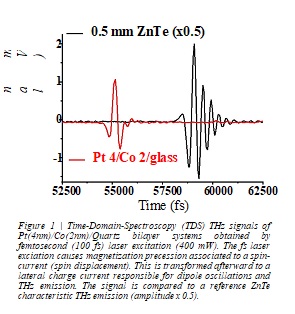
Haruhiko Morito
Tohoku University, Japan
Title: Crystal growth of Si based on the Na-Si binary phase diagram
Time : 16:35-17:00

Biography:
Haruhiko Morito received his PhD in engineering from Tohoku University in 2007. He is currently working as an associate professor at the Institute for Materials Research of Tohoku University. The main objective of his research is to develop an emerging material which has a new function and new physical properties. In particular, he has developed new functional ceramics containing alkali metals. He has also developed a new crystal growth process based on the binary phase diagram of sodium and silicon. He has synthesized the various silicon-based materials by the sodium flux method.
Abstract:
Phase diagram provide essential information for the conditions of materials synthesis and crystal growth. Although many binary phase diagrams were reported in the last century, that for Sodium (Na) and Silicon (Si) has not yet been established. In 2009, our group has presented a Na–Si binary phase diagram with the results of thermal analyses and morphology observation. In the present study, we demonstrated the crystal growth of Si from the Na–Si solution based on the Na–Si phase diagram. As shown in the Na-Si binary phase diagram (Fig. 1), Si is dissolved in a Na melt at 1173 K. Since the boiling point of Na is 1154 K at 1 atm and the vapor pressure of Na is relatively high above 973 K, Na can be removed from the products by evaporation. The Na-Si mixture (molar ratio Na/Si = 3:2) was heated at 1173 K. Na evaporation changed the composition of the sample toward the liquidus line at around 55 mol% Si at 1173 K, allowing crystallization of supersaturated Si to begin. After Na evaporation, single crystal of Si was obtained as shown in Fig. 1. Likewise, various Si crystals such as Si film, porous bulk Si and Si micro-tube were prepared by using a Na-Si solution. Furthermore, the efficient removal of impurities in Si for the solar cell was demonstrated by dissolution and recrystallization in a Na melt at low temperature. Recently, we succeeded in the crystal growth of Si clathrates by using a Na-Sn flux. These compounds have been widely studied due to their unique open-framework structures of Si polyhedrons.
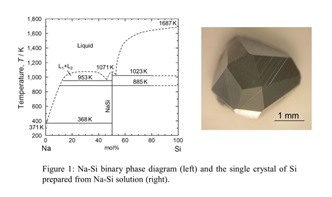
Reception Pool Deck 6:00PM-7:00PM (Allowed strictly during the timing mentioned)
Day 1 Concludes...
- Speaker Session I
Materials Science & Engineering | Nanotechnology in Materials Science | Batteries and Energy Materials | Mining, Metallurgy and Materials Science | Surface Science and Engineering | Electrical, Optical and Magnetic Materials | Materials Chemistry and Physics
Location: The Five Spot Room

Chair
Antoine Barnabe
CIRIMAT – Université de Toulouse III Paul Sabatier, France
Session Introduction
Antoine Barnabe
CIRIMAT – Université de Toulouse III Paul Sabatier, France
Title: p-type TCO thin films of Delafossite CuCrO2:Mg by rf sputtering with conventional thermal and ultra-rapid laser annealings
Time : 10:00-10:25

Biography:
A. Barnabé is a professor at the CIRIMAT laboratory (Mixed Oxide Valency research group), Paul Sabatier University, France. He received his PhD degree in chemistry of materials from University de Caen-Basse Normandie (France) in 1999. He held a post-doctoral position in Northwestern University, Evanston (USA), in 2000. His current research interests are mainly focused in functional metal oxide powders, ceramics and thin films prepared by PVD technique. He first worked on TEM characterization of giant magnetoresistance manganites then moves to complex oxides with new optoelectronic properties. For the last decade, he has developed transparent conductive oxides (n- and p-type) and gas-sensing layers for the CO2 detection sputtered oxide thin films. He’s in charge on the SEM/TEM/EPMA/SIMS characterization center R. CASTAING in Toulouse. To date, all these works have led to 63 publications, 2 patents, and more than 80 communications (hindex = 22, sum of the times cited > 1400).
Abstract:
Currently there is a lack of a p-type materials with comparable combinations of high conductivity and transparency to established n- TCO. This technological gap imposes many constraints on the conception and performance on optoelectronic devices which require a transparent hole injection, collection or transport layer. For p-TCO, it is first necessary to deposit the resultant material as a thin film on a transparent substrate. This has been already published using a large range of deposition conditions and technics. However, the main p-TCO performance still needs improvements to, in fine, reach that of their n-TCO counterparts. Second, proper control of the substrate temperature is required and may become an important issue for realistic applications since conventional or flexible substrates are required.
The growth of CuCrO2:Mg delafossite thin film on quartz substrate by rf sputtering is first reported in this work. The deposition leads to a nanocrystalline phase. Delafossite characteristic diffraction peaks were obtained as a function of the thermal treatment. The electrical conductivity was optimized until 1.6 S cm-1 with an optical transmittance of 63% in the visible range. The transport properties were analyzed by Seebeck and Hall measurements, integrated spectrophotometry and optical simulation.
The second part of this work is focused on the post laser annealing which was carried out by varying the scan speed, power and number of pass of the laser beam on films deposited on various polymer, conventional glass and quartz substrates. The laser annealing affects the microstructure, sheet resistance, and optical transmittance of the CuCrO2:Mg thin films. From the present work it can then be concluded that the preparation of efficient p-type TCO thin films based on Delafossite structure could be obtained at temperatures compatible with the use of cheap substrates such as flexible polymer or conventional glass slides.
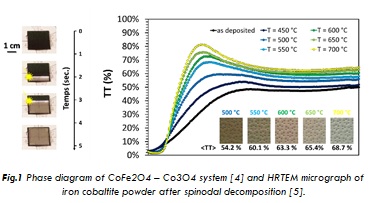
Fan-Bean Wu
National United University, Taiwan
Title: Single element transition metal nitride protective sputtering coatings with versatile structural features
Time : 10:25-10:50

Biography:
Fan-Bean Wu, Ph.D, graduated from Department of Materials Science and Engineering of National Tsing Hua University, Taiwan, in 2002. He has been recognized as a dedicated researcher in hard protective coating and specialty glass fields. As a faculty in Department of Materials Science and Engineering in National United University, Taiwan, and a society member in both Committees of Taiwan Association of Coatings and Thin Films, TACT, and Taiwan Ceramics Society, TCS, he has served as department chairperson, director of Editing committee, and vice-director of Member committee and received Awards of Outstanding Teaching, Outstanding Service, several research conferences and innovation expos. He welcomes all kinds of research collaboration and is willing to put efforts on developments in any interesting topics concerning coatings/surface technology/glass/material process technologies.
Abstract:
Transition metal nitride, TMN, coatings had been proved to be excellent protective surface layers in recent decades owing to their promising corrosion resistance, high hardness and modulus, good adhesion onto various substrates, and pronounced tribological behavior. Tremendous efforts were made on characteristic enhancement of the nitride coatings with multicomponent and multilayer features for the past decade. In this work single element nitride films, including TaN, MoN, and HfN, were and were manipulated to form amorphous, crystalline, preferred structures by RF magnetron sputtering and dedicated parameter control. Through input power and source gas ratio modulation, TaN with amorphous/crystalline altering layer stacking, i.e. an a-TaN/cTaN multilayer coating, could be produced with tougher behavior. Less tribological failures for the multilayer TaN coatings, like scratch cracking and peeling, during scratch and dry sliding wear were observed as compared to single layer coatings. Likewise, superior mechanical properties and corrosion resistance were obtained for single element HfN multilayer film with HfN nanolayers deposited under various RF input powers. More promising effect on adhesion enhancement was found for the nanocrystalline/preferred-orientation-crystalline MoN multilayer coatings. The continuity of column structure found in single layer nitride coatings could be effectively suppressed by nanolayered stacking of single element nitride layers with different structure features. The modulated multilayer features were also beneficial to the mechanical characteristics. The effects of the modulation on mechanical characteristics of the multilayer nitride coatings, such as hardness, modulus, adhesion strength, and tribological behavior, were demonstrated and discussed.
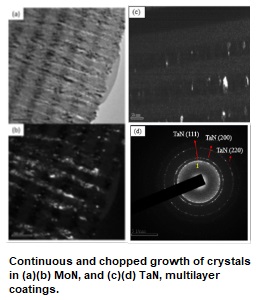
Daniela Rusu
LPIM - Université de Haute-Alsace, France
Title: New DGEBA-based epoxy resins toughened with liquid silicones
Time : 11:10-11:35

Biography:
Daniela Rusu (M.Sci., Ph.D., HDR in Materials Science) is a Polymer Scientist at the Université de Haute-Alsace, Laboratoire de Photochimie et d'Ingénierie Macromoléculaires (LPIM), Mulhouse, France. Her research and teaching activities focuses on multiphase polymer systems (polymer blends, nanostructured materials, gels, composites…), in understanding the processing-structure-properties relationships and tailoring these complex polymer materials for targeted applications (biomedical applications, food packaging, transport, coatings…). Her current research focuses on advanced polymeric materials for coating, and biodegradable polymers for medical and industrial applications. She co-authored 10 book chapters and over 100 articles on multiphase polymer systems, in different peer-reviewed journals and proceedings. She is an active referee for peer-reviewed journals and a scientific expert for EU Framework Program Horizon 2020 for Research and Innovation
Abstract:
Methodology & Theoretical Orientation: New epoxy-silicone coating formulations are proposed based on diglycidyl ether of bisphenol-A epoxy resin (DGEBA) and 5-amino-1,3,3-trimethylcyclohexanemethanamine (IPDA) as hardener. Several block and grafted copolymers with a silicone part were added to the epoxy matrix or to epoxy-silicone blends, at different silicone contents. Their effect on the morphology and dispersion effectiveness was studied by scanning electron microscopy (SEM). The influence of liquid silicone inclusions on epoxy curing kinetics and on final thermomechanical properties of epoxy-modified networks was investigated using differential scanning calorimetry (DSC) and dynamic mechanical thermal analysis (DMTA). Thermal stabilities of the new formulations were analyzed by thermogravimetric analysis (TGA). Findings: The morphological evolution of epoxy-toughened networks was used to understand and explain the differences in curing kinetics and impact properties of the epoxy-modified networks with different contents of liquid silicone.
Conclusion & Significance: A new strategy for preparing epoxy coatings was presented. Varying the chemical structure of silicone copolymers allows tailoring the morphology and morphological evolution of the silicone inclusions during curing and so, the impact resistance of the epoxy-silicone modified coatings.
Shrok Allami
Ministry of Science and Technology, Baghdad, Iraq
Title: Hydrogen storage characteristics of nanostructured La0.75Ce0.25Ni5 alloy grinded by sonication process
Time : 11:35-12:00

Biography:
Shrok Allami is a scientific researcher in ministry of science and technology/ renewable energy directory/ department of hydrogen and biofuel. She has completed her PhD at 2007 from University Technology, Iraq. She has published more than25 papers in reputed journals, participates at more than 16 national and international conferences as researcher and at their comities, and has been serving as an editorial board member in Iraqi scientific journals.
Abstract:
La0.75Ce0.25Ni5 alloy was purchased from Whole Win (Beijing) Materials Sci and Tech. com., Ltd. The nanocrystalline alloy was obtained by grinding the alloy powder in sonicatore under different periods. Particle size distribution, surface morphology and structure were studied by laser diffraction, SEM and XRD respectively. The surface area measured by BTU method. The hydrogen storage properties were examined by PCT measurement. The enthalpy (ΔH) and entropy (ΔS) of the alloy indicate that the thermodynamic performance of the nanocrystalline alloy is improved by increasing surface area and diffusion ability of hydrogen in the nanocrystalline microstructure. Short diffusion path of hydrogen in the nanocrystalline microstructure, resulting in better overall hydrogen storage properties, improved the hydrogenation-dehydrogenation reactions of the nanocrystalline alloy. The obtained hydrogen storage capacity was 4.23% (mass fraction), and the amount of hydrogen desorption was 3.74%.
Qiang Sun
Peking University, China
Title: Rational design of novel Cu-containing catalysts for effective CO2 conversion
Time : 12:00-12:25

Biography:
Qiang Sun is a professor at Peking University, China. His current research interest is in computational materials design for energy and environment applications. These include hydrogen storage, lithium batteries, solar energy, CO2 capture and conversion.
Abstract:
The environmental pollution caused by massive carbon dioxide emissions has become one of the main obstacles to the national health and economic development. It is now an urgent problem to develop novel CO2 conversion catalysts. According to current research, Cu electrode is reported to be the best CO2 reduction catalyst among the commonly used metal electrodes. However, bulk Cu electrode is also faced with a few problems like high overpotential, poor selectivity on products and low reaction efficiency due to scaling relationships. In order to develop new Cu-based CO2 reduction catalysts, we will focus on geometric optimization of low dimensional nanomaterials and study their catalytic performances. The introduction of Cu atom, Cu2 dimer, Cu nanowires and nano-flakes to one or two dimensional organic or inorganic systems may bring unique catalytic characteristic and break the limits of bulk Cu electrode. These well-distributed Cu nanostructures are easier to controll and may show novel physical and chemical effects including size effect, geometric effect, substrate effect, magnetic effect, curvature effect and spatial confinement effect, which may improve CO2 catalytic reduction.
Talal M Al Tahtamouni
Qatar University, Qatar
Title: Effect of TMAl pretreatment of sapphire substrate on the properties of MOCVD grown AlN epilayers
Time : 12:25-12:50

Biography:
Al tahtamouni is an associate professor at Department of Material Science and Technology in Qatar University. His research mainly concentrates on design, material growth and property study of III-nitride-based deep UV optoelectronic devices. He conducted the research on design, growth and testing of deep-UV light-emitting diodes (LEDs) and MOCVD growth of polar and nonpolar Group-III nitrides epilayers and quantum well structures. He also received many awards and honors, such as DFG Fellowship Research grant at Ulm University and Fulbright Research Award at Texas Tech University. Al tahtamouni's research work on deep ultra violet materials and device structures resulted in a series of technical publications in the world leading journals and conferences. Many of his papers have been published in Applied Physics Letters, widely considered one of the top international journals in this research area.
Abstract:
The growth of high quality AlN epitaxial films relies on precise control of the initial growth stages. In this work, we investigated the influence of trimethylaluminum (TMAl) pretreatment of sapphire substrates on the properties, impurity incorporation and growth mode change of AlN films grown by metalorganic chemical vapor deposition (MOCVD). Without the pretreatment, no trace of carbon was found at AlN/sapphire interface and the residual oxygen resulted in N-polarity. With 5s pretreatments, carbon started to be incorporated, forming scattered carbon-rich zones due to the decomposition of TMAl. It was discovered that carbon attracted surrounding oxygen impurity atoms and consequently, suppressed the formation of N-polarity. With 40 s pretreatment, a significant presence of carbon clusters at the AlN/sapphire interface occurred, which attracted considerable co-existed oxygen. While preventing the N-polarity, the carbon clusters served as random masks to further induce a 3D growth mode, creating Al-polar AlN nanocolumns with different facets. The properties of AlN and epitaxial growth mode change are discussed
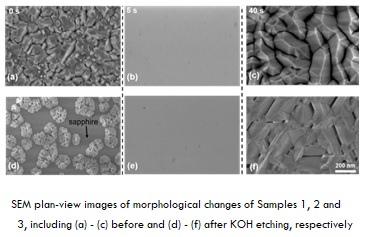
Ahmed Abd El-Fattah
Alexandria University, Egypt
Title: Injectable antimicrobial collagen/nanohydroxyapatite hydrogel scaffolds for bone regenerative applications
Time : 12:50-13:15

Biography:
Ahmed Abd El-Fattah research work is focused on preparing nanoparticles and nanofibers block copolymers with different architectures and compositions. Polymeric materials (hydrogel scaffold) with a range of different final properties were obtained by selecting suitable synthetic strategies. Moreover, those nano copolymers used as drug delivery systems and scaffolds for tissue engineering applications. They were loaded with various bioactive agents (antimicrobial, anticancer, and photosensitizer) and their release profile were studied.
Abstract:
Bone is a complex, highly organized living organ forming the structural framework of the body. It is a naturally existing composite that is composed of an inorganic mineral phase of hydroxyapatite (60% by weight) and an organic phase of mainly type I collagen. Bone defects are a serious illness that may result after a pathological process has destroyed vital components of the bone. Recently, Injectable hydrogels have been used in bone regenerative applications, because of their high tissue-like water content and moldable features. Such injectable hydrogels are of particular significance because drugs, cells, proteins, and bioactive agents can be essentially incorporated into polymer solutions before administration. In this work antimicrobial injectable hydrogel scaffolds based on a biopolymer matrix composed of collagen, reinforced with the nanohydroxyapatite (nHA), were prepared. The chemical structure, morphology, and swelling ratio as well as mechanical and viscoelastic properties of the prepared hydrogel scaffolds were investigated. For drug-release tests, gentamicin, an antibiotic drug, was entrapped within the scaffold, and the drug-release profile was examined The results revealed that the incorporation of the nHA particles into the collagen hydrogel enhanced the mechanical and biodegradable properties and also cause a reduction in both the hydrogel porosity and swelling ratio. Furthermore, the rheological studies showed that the collagen/nHA hydrogel scaffolds is non-Newtonian viscoelastic material with more elastic dominance and exhibited higher stiffness. These properties make the injectable hydrogel of potential interest as biomimetic scaffold for bone regeneration operations in diverse applications. Consequently, this collagen/nHA hydrogel scaffold will provide an opportunity to translate lab research to the market and to apply the principles of tissue engineering in the clinical settings.
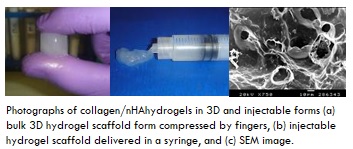
Lunch Break 13:30 onwards @ Renaissance III
Day 3 Concludes....
- E-Poster Presentation
Location: published only on Conference Website
Session Introduction
Xiyue Zhou, Yucen Liu and Guowen Ding
De Anza College, USA
Title: A new conductive material for energy efficient window applications

Biography:
Xiyue Zhou and Yucen Liu are students at De Anza College, California, USA. They used a modern nano-thin film deposition research system to study new conductive materials, and characterized the optical properties of these new materials, which were the first reported, and could be used other optical applications; Under the guidance of Dr. Ding, they used these new materials to develop new energy-efficient windows prototype products.
Abstract:
Silver-based and TiN based thin film glass coatings with thicknesses of tens of nanometers are widely used in today's energy-efficient building windows. However, there is no Ag-Ti alloy thin film coating on optical coating applications reported. In this study, Ag-Ti alloy from 10nm to 40nm thin film was deposited by a co-sputter technique at a magnetron sputter system with three sputtering target guns in a high vacuum chamber. The chamber base pressure is 4x10-7 Torr, and the films were deposited at 3 mTorr. The Ag to Ti ratio in AgTi alloy was controlled by the two independent pulsed-DC power suppliers, from 50W to 200W during the sputtering deposition. The Ag-Ti alloy single thin film refractive index (n,k) were measured by a Woollam ellipsometer combined with a Shimadzu 3700 UV-Vis-NIR spectrometer (300nm to 2500nm), and the optical properties of the new nanoscale thin film materials Ag-Ti alloys are the first time reported. The alloy Ag-Ti refractive index was strongly dependent on its resistivity, which was calculated from the resistance measured by a four-point probe and the film thickness measured by the ellipsometer. The third target in the chamber is Si target, which is used for the thin film Si3N4 deposition by reactive sputtering Si target under Ar-N2 mixed gas at 3 mTorr. The thin film stack of Si3N4/Ag-Ti/Si3N4 on glass was simulated for the optical performance optimization to guide the experiments, and the transmittance of (40 nm Si3N4 / 20 nm Ag-Ti / 12 nm Si3N4 / glass) on glass could be 40%~50%, and those performances are comparable to many energy efficient window products on the market today, on the other hand, such a tri-layer simple stack showed the potential benefits of lower production costs.
Tai-Ping Chang
National Kaohsiung First University of Science and Technology, Taiwan
Title: Vibration and buckling analysis of single-walled carbon nanotube under magnetic field based on meshless method

Biography:
Tai-Ping Chang received PhD degree in Civil Engineering and Engineering Mechanics from Columbia University, NYC, USA, in 1985. Since 2002, he has been working as a professor and chairman (2002-2008) of Construction Engineering department at National Kaohsiung First University of Science and Technology, Taiwan. His current research interests include Structural Dynamics, Random Vibration, Finite Element Methods, Computational Mechanics, Nano Mechanics, Fluid-Structure Interaction, Disaster Prevention and Mitigation and Hazard Risk Assessment.
Abstract:
In the present study, the meshless Petrov–Galerkin (MLPG) method is adopted to study the free vibration and axial buckling characteristics of single-walled carbon nanotube (SWCNT) subject to magnetic field. In particular, a nonlocal shell model accounting for the small scale effect is utilized. In the theoretical formulations, a variational form of the Donnell shell equations is constructed over a local sub-domain which leads to derivation of the mass, stiffness and geometrical stiffness matrices. The resonant frequencies and critical axial buckling loads of SWCNT are presented. The influences of boundary conditions, nonlocal parameter and geometrical parameters on the mechanical behavior of SWCNT are investigated and discussed completely. Finally, the numerical results based on the present study are checked by finite element method, they show excellent agreement.

Biography:
Ohyoung Kim has expertise in biomedical polymer, environmental-friendly polymer as well as various functional nanomaterials and polymers for electronic application. He received his B.S. and M.S. degree at Seoul National Univ., and Ph.D. degree from Univ. of Massachusetts at Lowell (polymer science). From 1997, he has been served as a professor at department of polymer science and engineering, Dankook University, Gyeonggi, Korea, with special contributions as a head of industry-university cooperation foundation, office of planning, and secretary’s office of President of Dankook University. He is currently a dean of faculty for college of engineering and graduate school of information technology & intellectual property.
Abstract:
The approach using localized surface plasmon resonance (LSPR) from metallic nanoparticles is attractive as one of the promising method to enhance the internal quantum efficiency of an organic light emitting diode (OLED) or power conversion efficiency of an organic solar cell (OSC), where the various shapes and geometrical arrangements of the nanoparticle and the nanostructures affects their performances. LSPR increases electromagnetic density of states which contribute to more efficient light emission of OLEDs. In order to investigate the light extraction from metallic nanoparticle array, we have compared the monodispersed silver nanoparticles (randomly dispersed onto substrates by spin-coating) with the ordered gold metallic arrays (formed by the phase separation of block copolymer; BCP). Gold nanoparticles arrays were given a particular morphology, which is driven by self-assembly of polystyrene-block-poly(2-vinyl pyridine) BCP thin film by solvent-annealing process. Controlling the annealing time and solvent type of the block copolymer results in the various nano-morphologies. In case of OLED, light emission efficiency (internal quantum yield) shows notable improvement (about 43.8%) in terms of current efficiency for line patterns of Au nanoparticles array developed by BCP self assembly. Those plasmonic nanostructures of gold were almost similar scales of BCP patterns, formed at the on the surface of anode (ITO) at both OLED and OSC, showing notable enhancements of the light extraction and power conversion efficiency. The size and the anisotropy of gold nano-patterns were changed from a simple dispersion of dot through an integrated dot-line pattern, finally to a contour line pattern with higher percolation of particle array.
G M Wu
Chang Gung University, Taiwan
Title: Preparation and characterization of low temperature nanostructured perovskite solar cells

Biography:
G.M. Wu has completed his PhD from the University of Delaware, USA and had been a visiting professor at the University of California at Los Angeles, USA. He is in charge of the Electro-Optical Engineering Laboratory of Chang Gung University in Taiwan. He has published more than 50 papers in reputed journals and served as technical consultants for a broad range of industrial companies. This study was supported in part by the Ministry of Science and Technology under research grants MOST105-2221-E182-059-MY3 and NERPD2E0481.
Abstract:
Statement of the Problem: Reliable energy is essential in providing the much needed sustainable economical development for a modern society. Inevitably, due to the limitation in natural energy resources and the growing concern for environmental protection, alternative power generation technologies have become very important. The recent discovery of organic-inorganic perovskites offers promising routes for the development of low-cost, solar-based clean energy solutions for the future. Thin-film solar cells provide promising technology for cost-competitive solar power via reduced material and fabrication costs as compared to the prevailing crystalline silicon photovoltaic system. Such systems make use of high absorption of photons. Methodology & Theoretical Orientation: Organic–inorganic hybrid solar cells that combine a mesoporous scaffold, a perovskite light absorber and an organic hole transporter have emerged at the forefront of solution-processable photovoltaic devices. However, they require high processing temperature of up to 500°C to sinter the mesoporous metal-oxide support. Here, we used different powder and solution spin coatings on the glass substrates to observe the different film-forming characteristics. Findings: We demonstrated two low-temperature processes that could be stable with more than 10% conversion efficiency. In addition, we used dimethylsulfoxide (DMSO) instead of the common N, N-dimethylmethanamide (DMF) to dissolve PbI2 and to fabricate PbI2 films. This strategy overcame the problem of incomplete conversion and uncontrolled particle size of perovskite in the absence of mesoporous scaffolds, which greatly increased the film reproducibility. Conclusion & Significance: After the parameters have been optimized, long time stability characterization could be carried out for the new high efficient solar cell system.
- Plenary Talk
Location: The Five Spot Room
Session Introduction
Alexander G Ramm
Kansas State University, USA
Title: Wave scattering by many small impedance particles and creating materials with a desired refraction coeffcient
Time : 09:45-10:45

Biography:
Alexander G Ramm was born in USSR and emigrated to USA in 1979. he is a US citizen, professor of mathematics at KSU, an author of more than 660 papers in mathematical and physical Journals, of 15 monographs, and an editor of 3 books. His scientific interests include differential and integral equations, operator theory, mathematical physics, especially scattering theory and inverse problems, numerical analysis, especially methods for solving ill-posed problems, various problems of applied mathematics and theoretical engineering. Professor A.G.Ramm was awarded many honors, including Fulbright Research Professorships in Israel and Ukraine, Mercator Professorship, NATO and DAAD professorships and grants, Khwarizmi international award, distinguished professorships in some countries and distinguished lectureships of London Mathematical Society and Hong Kong Mechanical society, and many other honors and awards. He gave invited plenary talks at many conferences throughout the world.
Abstract:
The theory of acoustic and electromagnetic (EM) wave scattering by one and many small impedance particles of arbitrary shapes is developed. The basic assumptions are: a << d <<λ, where ‘a’ is the characteristic size of particles, ‘d’ is the smallest distance between the neighboring particles, ‘λ’ is the wavelength.
This theory allows one to give a recipe for creating materials with a desired refraction coefficient.
- One can create material with negative refraction: the group velocity in this material is directed opposite to the phase velocity.
- One can create a material with a desired permeability.
- Equation is derived for the EM field in the medium in which many small impedance particles are embedded.
- Similar results are obtained in [6] for heat transfer in the media in which many small particles are distributed.
The theory presented in this talk is developed in [1]-[6].
REFERENCES:
[1] A.G.Ramm, Scattering of acoustic and electromagnetic waves by small bodies of arbitrary shapes. Applications to creating new engineered materials, Momentum Press, New York, 2013.
[2] A.G.Ramm, Many-body wave scattering problems in the case of small scatterers, J. of Appl. Math and Comput., (JAMC), 41, N1, (2013),473-500.
[3] A.G.Ramm, Scattering of electromagnetic waves by many nano-wires, Mathematics, 1, (2013), 89-99. Open access Journal: http://www.mdpi.com/journal/mathematics
[4] A.G.Ramm, Wave scattering by many small bodies: transmission boundary conditions, Reports on Math. Physics, 71, N3, (2013), 279-290.
[5] A.G.Ramm, Scattering of EM waves by many small perfectly conducting or impedance bodies, J. Math. Phys. (JMP), 56, N9, 091901, (2015).
[6] A.G.Ramm, Heat transfer in complex medium, In the book "The foundation of chaos revisited: from Poincare to recent advances", Editor C. Skiadas, Springer, 2016, pp. 119-136.
- Materials Science & Engineering | Nanotechnology in Materials Science | Surface Science and Engineering
Location: The Five Spot Room

Chair
Sampath kumar M C
B.M.S College of engineering Bangalore, India
Session Introduction
Davoud Dastan
Cornell University, USA
Title: Flexible organic field effect transistors with enhanced electrical properties
Time : 11:05-11:25

Biography:
Davoud Dastan has his expertise in the area of materials science. His expertise in materials science includes synthesis, characterization of nanomaterials for energy applications. He has the experience of synthesizing semiconductor oxides nanoparticles and thin films, fabricating solar cells, metal-insulator-semiconductors (MIS) structures, and organic field effect transistors using hybrid materials such as organic/inorganic materials. He has got several competitive grants during his research and has an ever growing potential for exploring his interest in materials science and nanotechnology.
Abstract:
Bottom-gate top-contact organic field effect transistors (OFET’s) have been fabricated on flexible substrates. Organic/inorganic materials are used as gate dielectric to enhance the output and transfer characteristics of the fabricated devices. Rutile titania nanoparticles (NP’s) were prepared using solvothermal technique and incorporated into poly vinyl alcohol (PVA) to improve the capacitance and therefore dielectric constant of the host matrix. The composite films were exposed to ozone treatment and the gold contacts were thermally made on top of the films through a shadow mask. The gate dielectric was treated with a self-assembled monolayer (SAM) of octadecyltrichlorosilane (OTS) and then an active layer of copper phthalocyanine (CuPc6) was deposited on top of the films. The output and transfer characteristics of the fabricated FET’s were measured using semiconductor parameter analyzer. OFET’s treated with a SAM of OTS exhibited higher mobility, on-off current ratio, and lower threshold voltage than the devices without a SAM of OTS treatment.
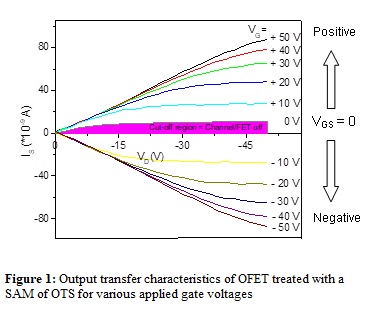
Daniela Penther
Technische Universität Berlin, Germany
Title: Microstructural characterization of Mg-SiC nanocomposites produced by powder metallurgy techniques
Time : 11:25-11:45

Biography:
Daniela Penther has her expertise in powder metallurgy techniques including high energy ball milling, diverse pressing techniques and sintering of metals. She started studying and analyzing composites by SEM (EDS, EBSD), XRD and TEM during her diploma thesis in the collaborative research centre “TRIP-Matrix-Composite” supported by German Research foundation (DFG) at TU Bergakademie Freiberg, Germany. During her PhD she is currently producing Mg-SiC nanocomposites by powder metallurgy techniques and analyzing their microstructure as well as their fatigue behavior in a project supported by DFG at Technische Universität Berlin, Germany.
Abstract:
In the present study, the microstructure of newly developed magnesium matrix composites reinforced with SiC nanoparticles was investigated. To produce Mg-SiC nanocomposites, magnesium powder and various volume fractions of SiC particles with an average diameter of 50 nm were co-milled by a high energy planetary ball mill. The milled powder was compacted by a hydraulic hand-operated press followed by cold isostatic pressing and sintering. Finally, the nanocomposites were hot extruded to eliminate porosity and achieve full density. Scanning electron microscopy, energy dispersive x-ray analysis and x-ray diffraction were used to characterize the microstructure and texture of the magnesium matrix and the distribution of the SiC-reinforcements after extrusion. Further, transmission electron microscopy analyses were performed to study the grain size of the magnesium matrix and the interface between the SiC nanoparticles and the magnesium matrix. All developed nanocomposites revealed a uniform distribution of the SiC nanoparticles in the magnesium matrix. No evidence of porosity or interfacial products between the SiC nanoparticles and the magnesium matrix were found, indicating a well-bonded interface. The used powder metallurgy techniques allow to produce dense nanostructured Mg-SiC nanocomposites.
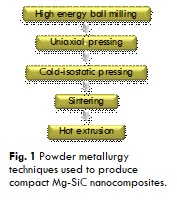
John O Adongo
Humboldt-Universität zu Berlin, Germany
Title: Fabrication of surfaces modified with carboxymethylthio ligands towards chelate-assisted trace-level extraction of copper
Time : 11:45-12:05

Biography:
John Onyango Adongo is a doctoral candidate registered at Humboldt-Universität zu Berlin, Germany. He conducts collaborative research within the surface sciences group of Dr. Jörg Rappich based at the Institut für Si-Photovoltaik, Helmholtz-Zentrum Berlin für Materialien und Energie GmbH (HZB). He currently holds a tutorial fellow position at the chemistry department, Egerton University, Kenya. As a material scientist, his doctoral research focusses on the design, fabrication and testing of potentially renewable HMI – chelating surfaces incorporating silicon as the substrate material. The approach for functionalizing substrate surfaces majorly involves the facile electrografting method achieved via electroreduction of aryl diazonium salts.
Abstract:
Statement of the Problem: Copper (Cu) is an essential metal in biological systems; however, at concentrations beyond threshold limits, it can become highly toxic to humans and aquatic organisms. Excessive Cu in the blood has been associated with the Wilson’s disease. Copper can bind onto certain organic ligands via coordination mechanisms. Electrochemical grafting of aryl diazonium derivatives have successfully been used to modify substrates by introducing layers of various organic functional groups onto metallic and semiconducting substrate surfaces.
1 Strategies involving functionalization of substrates with large-molecular-weight oligomers and peptides via diazonium grafting routes for extraction of heavy metal ion (HMI) pollutants have been reported. Some of these methods involve introduction of chelating groups in more than a single step. However, a simpler one-step quick grafting of low-molecular-weight HMI - chelating agents may not only present some cost reduction advantages towards devising kits for HMI extraction but also permit the fabrication of thinner layers with optimal surface grafting and excellent chelation efficiency. Silicon is one of the most abundant materials on the earth’s crust and its suitable surface chemistry has motivated organic functionalization efforts towards developing a wide range of applications. The purpose of this study is to explore a one-step functionalization strategy for introducing carboxymethylthio (CMT) chelating groups via direct electrografting of the diazonium cation 4-[(carboxymethyl)thio]benzenediazonium cation, (4-CMTBD), onto Si surface, leading to fabrication of the Si-(4-CMTB) surface. The investigation of Cu chelation is also studied. Findings: The fabricated surface, Si-(4-CMTB), is capable of chelating Cu ions from aqueous solutions at trace amounts as shown by Raman spectroscopy.
2 Conclusion & Significance: Chelate functionalized Si surfaces may be of potential engineering interests for HMI sensing and/or extraction. This study offers positive contributions in the fields of environmental protection, forensic diagnostics, biosensing, and mineral prospecting among other related disciplines.
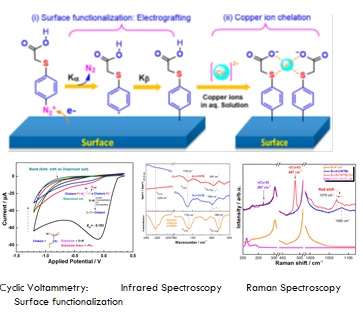
Juliano Schorne Pinto
Université de Toulouse, France
Title: Thermal-structural and elemental analysis of Cu-Fe-O system coupled with available thermodynamic modeling
Time : 12:05-12:25

Biography:
Juliano Schorne Pinto is a Ph.D. student at Université de Toulouse and research associate at the CIRIMAT and Laboratoire de Génie Chimique. He has obtained his Master's degree in Materials Science and Engineering at Université of Montpellier (France) and bachelor’s degree in Materials Engineering from the Federal University of Rio Grande do Sul (Brazil). He has experience in the synthesis and characterization of nanostructured materials with photocatalytic activities, carbon nanotubes and thermodynamic modeling of systems using the CALPHAD method.
Abstract:
The Cu-Fe-O system has a great technological interest in the copper industry, as well as the development of catalytic compounds and transparent devices. The CuFeO2 phase (delafossite) and CuxFe3-xO4 phase (spinel) exhibit remarkable electrical, magnetic, optical and optoelectrical properties. Therefore, an in-depth understanding of the stability of the delafossite structure becomes of particular interest for fundamental research and for instance, its applications to the development of efficient p-type TCOs. The purpose of this study is reviewed the structural and thermodynamic information and phase equilibria of the Cu-Fe-O system in addition to checking the consistency of the available thermodynamics models with the experimental data. First, several of these models based on the CALPHAD method were reviewed and differences were highlighted. Moreover, several experimental procedures were employed to establish the relationships among temperature, lattice parameter, and stoichiometry of mixed oxides. In situ HT-XRD (High-temperature X-Ray Diffraction) and TGA/DTA measurements, Rietveld refinement were used to provide thermo-structural information in the range of 50° to 1100°C from stoichiometric mixture of CuO and Fe2O3 single oxides. Plasma Sintering (SPS) followed by adjusted post-annealing treatments were used to stabilize delafossite phase in different Copper/Iron gradient and analyzed by Electron Probe Micro-Analyzer (EPMA). The HT-XRD demonstrated that the spinel phase started to be formed from 750° and increases the amount of Cu after 900°C (CuxFe3-xO4). In addition, the variation of lattice parameters of spinel phase was determined by Rietveld refinement and compared with those of different molar ratios. Contrary to all the models, EPMA coupled with local structural analysis showed that delafossite phase could be stabilized with a substantial degree of cationic non-stoichiometry. These results were related to available thermodynamics models providing an improved understanding of this system, new information has generated to implement the existing data. The need to develop and improve a new model is considered.
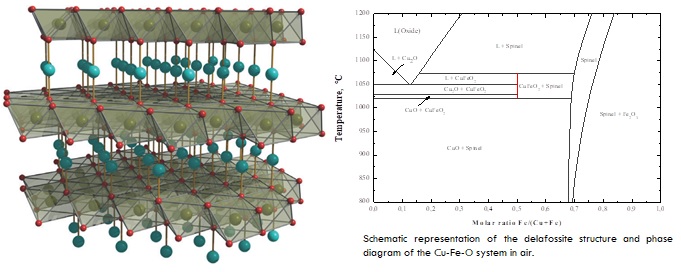
Lunch Break 12:45-13:45 @ Renaissance III
- Poster Presentations
Location: Pre-Function Space
Session Introduction
Tamara Florian
Clausthal University of Technology, Germany
Title: MSE-01: Online monitoring of the filling behavior of highly-filled polymeric materials during the injection molding process

Biography:
Tamara Florian graduated 2010 at the Munich University of Applied Sciences in the field of process engineering. Since then, she is working at the Institute of Polymer Materials and Plastics Engineering in the field of processing and functionalization of thermoplastic materials. She is mainly concerned with the development of new, functional materials and their processing properties in the injection molding process. Apart from the consideration of the properties in conventional injection molding, Ms. Florian is particularly concerned with the micro-injection molding technique
Abstract:
In the field of micro systems technology, e.g. for sensors or actuator applications, polymeric materials with functional properties (e.g. electrical conductivity or magnetic properties) are an interesting alternative to common metallic materials due to their high-efficient fabrication techniques. The desired functional property spectrum is often realized by addition of functional fillers, which inevitably influences the injection molding process. Especially the flow-ability and the mold filling behavior change dramatically due to the fillers. This behavior is critical for the quality of the final part, but cannot be predicted sufficiently until now. At present, the current standard process monitoring technologies are not adequate to provide enough information to analyze and optimize the filling behavior.
In the presented study, the flow behavior of the highly-filled polymeric materials is characterized with a glass-insert mold which is designed for direct visual analysis of the flow phenomena. The investigation is carried out using polyamide (PA 6) with ferrite micro particles of 150µm size. These particles are admixed to the polymer matrix with filler contents of 50 vol.-%, 60 vol.-% and 65 vol.-%, respectively. The flow front is observed during the filling stage with a high-speed camera. The filling behavior is simulated with commercial software (Mold Flow®), and validated with the real experiment. Based on these investigation, the processability of highly filled polymer melts are characterized both by experiment and simulation, with evaluation of the conventional simulation tools for application in highly-filled polymeric materials.
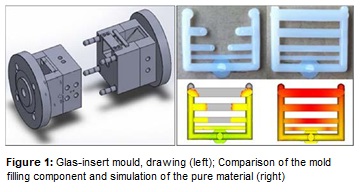
Hae Jin Kim
Hanyang University, Republic of Korea
Title: MSE-02: Angiogenesis depression effect; a cure for glioblastoma multiforme through oral administration by lactoferrin-glycyrrhizin conjugate, as HMGB1 antagonist

Biography:
Hae Jin Kim graduated from Sejong University, Department of Bioengineering at the age of 24, and progressed to master’s course in Hanyang University. She is mainly working on cancer. In particularly, she studies the development of newly drug for the treatment of brain cancer and improving the method of administration. She has identified that the prognosis of disease is poor because drug delivery to the brain was difficult by blood-brain barrier. To improve this problem, she synthesized novel material for convenient administration method and targeting effect to the brain.
Abstract:
Glioblastoma multiforme (GBM) is one of the most common and aggressive brain tumors in humans. Recently, to cure GBM clinically, antiangiogenic therapy with medications such as Avastin is tried to slow the GBM growth. However, this drug can induce some side effects like stroke and kidney problem. To improve this problem, we newly developed an orally absorbable glycyrrhizin (GL) that can bind to HMGB1 and overexpression of HMGB1 induces angiogenesis on the tumor tissue. Also, we conjugated GL with Lactoferrin (Lf) for oral administration, Lf can be absorbed by receptor (Lf-R) that is expressed on the small intestine, blood-brain barrier (BBB) and glioma cell. We expected potential of GBM region targeting and anti-angiogenesis via HMGB1 capturing, when the lactoferrin and glycyrrhizin (Lf-GL) was orally administered. Through this research, we confirmed that conjugation between the Lf-GL, which had increasing HMGB1 binding affinity. In addition, this material showed effect that is growth inhibition of GBM spheroid and anti-angiogenesis and vascular regression on the in vitro model. And then, we preferentially confirmed effect of LF-GL on cancer tissue in the xenograft mouse model and proceeded experiments to confirm anti-angiogenesis and possibility of orally absorbable in the GBM orthotopic mouse model. consequently, these results demonstrated that the Lf-GL would be a novel drug for the effective treatment of brain tumor.
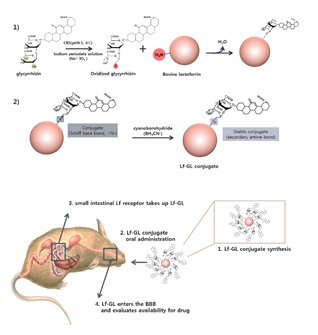
Sijin Park
Hanyang University, Republic of Korea
Title: MSE-03: Colorimetric contact lens type sensor consisting of cerium oxide nanoparticles and glucose oxidase for tear glucose detection

Biography:
Sijin Park graduated from Hanyang University, Department of Bioengineering at the age of 24, and progressed to master’s course. She is mainly working on diabetes. In particularly, she studies the development of glucose sensors for the management of blood glucose in diabetic patients. She has identified the disadvantages of the Fingerprick test, which is currently the most commonly used method, and invented a breakthrough method to overcome the drawbacks. Instead of measuring blood in the fingertips, she has developed a method for sensing blood glucose non-invasively through glucose concentration in the tear
Abstract:
A contact lens is ideal to monitor glucose levels in tear. We designed a contact lens-based biosensor comprised of glucose oxidase (GOX) and cerium oxide nanoparticle (CNP) to detect glucose levels in tear. GOX catalyzes the oxidation of glucose to hydrogen peroxide (H2O2) and gluconolactone. Then, CNP catalyzes the reduction of H2O2. At this moment, Ce3+ being colorless shift to Ce4+ state that is shown yellow color. Glucose levels can be determined by analyzing the change of color. B value of RGB color is used to determine glucose levels, being shown the correlation with glucose concentration. To confirm the synthesized CNP structure, we perform the XPS, XRD, HR-TEM. GOX is immobilized on a modified-CNP using PEG spacer; it is CNP-PEG-GOX. The formation of CNP-PEG-GOX is determine via quantitative analysis of GOX. The contact lens sensor maintains its mechanical properties compared with HEMA contact lens. and has correlation with glucose levels in buffer and artificial tear.
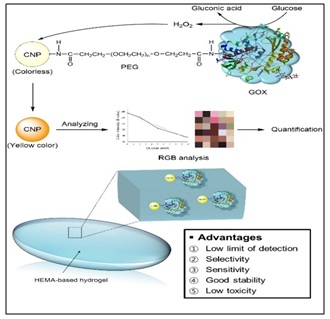
Antoine Barnabe
CIRIMAT – Université de Toulouse III Paul Sabatier, France
Title: MSE-04: Periodic nanostructures obtained by spinodal decomposition at low temperature on Co1.7Fe1.3O4 thin films prepared by radio frequency sputtering

Biography:
Antoine Barnabé is a professor at the CIRIMAT laboratory (Mixed Oxide Valency research group), Paul Sabatier University, France. He received his PhD degree in chemistry of materials from University de Caen-Basse Normandie (France) in 1999. He held a post-doctoral position in Northwestern University, Evanston (USA), in 2000. His current research interests are mainly focused in functional metal oxide powders, ceramics and thin films prepared by PVD technique. He first worked on TEM characterization of giant magnetoresistance manganites then moves to complex oxides with new optoelectronic properties. For the last decade, he has developed transparent conductive oxides (n- and p-type) and gas-sensing layers for the CO2 detection sputtered oxide thin films. He’s in charge on the SEM/TEM/EPMA/SIMS characterization center R. CASTAING in Toulouse. To date, all these works have led to 63 publications, 2 patents, and more than 80 communications (hindex = 22, sum of the times cited > 1400).
Abstract:
Inside a miscibility gap of a phase diagram, a homogeneous solid solution is not stable and progressively broken down into two different phases either by nucleation/growth or spinodal decomposition. Spinodal transformation which only operates in a limited area of the gap, can induce periodic microstructures at a submicronic scale. When they contain at least a magnetic ordered phase, such microstructures could then be a key step in the quest for materials with original properties such as giant magnetoresistance, and/or magnonic crystal which are likely to find new technological applications.
In the CoFe2O4–Co3O4 phase diagram there is a miscibility gap in which spinodal decomposition can lead to regular alternation of ordered magnetic phases made of spinel oxides. This was mainly observed in powders. In the context of potential future applications, it is however necessary to be able to prepare thin films and to induce in them spinodal decomposition at low temperatures. The purpose of this study is devoted to 1) the preparation of Co1.7Fe1.3O4 spinel iron cobaltite thin films on cheap substrate, 2) the structuration at the nanoscale by spinodal transformation at moderate temperatures and 3) the characterization at the nanoscale on the spinodal transformation.
Pure thin films of Co1.7Fe1.3O4 spinel iron cobaltites were prepared by rf sputtering. The two-phase spinels obtained through the spinodal transformation were evidenced after annealing in air at low temperature by XRD/TEM/Raman/Mossbauer/electrical measurements studies. Specific in-plane sections elaborated by FIB were carried out and analyzed by high resolution TEM studies coupled with EELS/EDS/STEM elemental analysis at the atomic scale.
From the present work it can then be concluded that the preparation of Co1.7Fe1.3O4 thin films structured by spinodal transformation could be obtained at temperatures compatible with the use of cheap substrates.
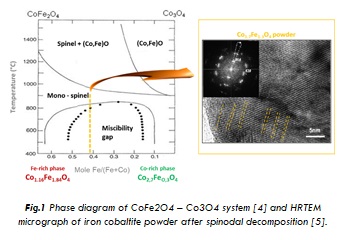
Chung Wung Bark
Gachon University, Republic of Korea
Title: MSE-05: Effects of doping ratio of cobalt and iron on the structure and optical properties of ferroelectric bismuth titanates

Biography:
Chung Wung Bark has completed his PhD from POSTECH, Korea and postdoctoral studies from University of Wisconsin-Madison, USA. He has published more than 150 papers in SCI journals and has been serving as a guest editorial board member.
Abstract:
The wide band gap of complex oxides is one of the major obstacles limiting their use in photovoltaic cells. Tunability of the bandgap for ferroelectric complex oxides is one of the key issues for photovoltaic applications. We report doped ferroelectric oxides with narrow bandgaps and photovoltaic effect. To identify an effective route for tailoring the band gap of complex oxides, this study examined the effects of cobalt and iron doping on lanthanum-modified Bi4Ti3O12-based oxides synthesized using a solid reaction. The structural and optical properties were analyzed by X-ray diffraction and ultraviolet-visible absorption spectroscopy. As a result, the optimal iron to cobalt doping ratio in bismuth titanate powder resulted in ~1.94eV decrease in the optical band gap. In the film form, the optical bandgaps of Co-doped Bi3.25 La0.25 Ti4O12 (BLT) and Fe, Co- doped BLT films was narrower than that of non-doped BLT by more than 1 eV. Correlated with the bandgap reduction, the Fe,Co-doped BLT film shows largely enhanced the photocurrent density by 25 times that of than BLT films. The density functional theory (DFT) calculation confirms that intermixed transition metal dopants (Fe, Co) in BLT generate novel energy states under conduction band. This new route to reduce the optical bandgap can be adapted to the synthesis of other complex oxides. This approach to tune the bandgap by simple doping could be applied to other wide-bandgap materials, which have the potential to be used in solar energy conversion or optoelectronic applications.
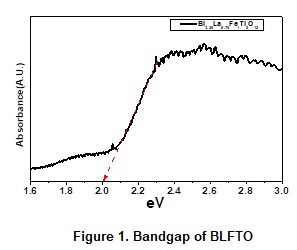
Hyung Wook Choi
Gachon University, Republic of Korea
Title: MSE-06: Characterization and analysis of phosphor condition with electrode of perovskite solar cells

Biography:
Hyung Wook Choi has completed his PhD from Yonsei University, Korea and postdoctoral studies from Pennsylvania State University, USA. He has published more than 100 papers in SCI journals.
Abstract:
Nowadays, solar cells of silicon have reached efficiencies of up to 25% for single crystal Si. But, the production of such material requires energetically demanding processes and relatively expensive production. Recently, a new class of perovskite was introduced as light harvesting material, showing strong absorption in a broad region of the visible spectrum, good electron and hole conductivity, delivering also high open circuit voltages in photovoltaic devices. The main advantage of such an organic-inorganic hybrid material is a high absorption coefficient, excellent long distance carriers to move the hole diffusion length. Mixed halide perovskite materials, which electron hole diffusion length is ten times longer than those only containing iodide. Which presents efficient charge transport, low recombination rates and also good pore filling of the TiO2 layer enhancing device performance with respect to Spiro-OMeTAD (HTM). Trivalent rare-earth (RE) ions activated materials have kept booming in the past decades owing to their wonderful applications in phosphor-converted white light-emitting diodes (WLEDs), solar cells, temperature sensors, and drug deliveries. RE ion-doped inorganic phosphors revealed intense luminescent properties and showed potential applications in WLEDs. The conversion luminescence of a phosphor from the ultraviolet region to the visible region can enhance the light harvesting in Perovskite solar cells (PSCs), because many perovskites can only absorb visible light. In this work, to explore the influence of phosphor additives on the conversion efficiency of PSC, we introduce the YAG:Ce3+ phosphor layer. The samples were characterized by XRD, SEM, UV–vis, PL and IV-curves. Photoelectrode DSSC with light-to-electric energy conversion efficiency was achieved under a simulated solar light irradiation of 100 mW/cm2 (AM 1.5).
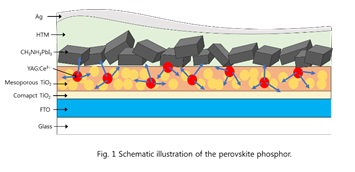
Takumi Namba
Tokyo University of Science, Japan
Title: MSE-07: Preparation of oxide semiconductors thin films for the transparent electrode by helicon-wave excited plasma sputtering method

Biography:
Takumi Namba was received the Bachelar of Engineering degree in electrical engineering from Tokyo University of Science, Tokyo Japan, in 2016. He is now a master course student of Graduate School of Engineering in Tokyo University of Science. His research interest iclude development of oxide compound thin film solar cells as the earth eco-friendly next generation solar cells.
Abstract:
Silicon (Si)-based solar cells have a market share of more than 90%, and are expanding in this market. However, high purity Si is very expensive and would be the risks of short supply and price fluctuation. Recently, Cu(Inï½¥Ga)Se2(CIGS) based thin film solar cells have been attracted as high conversion efficiency as a high efficiency thin film solar cell of the next generation and achieved the highest conversion efficiency of 20% over. The top electrode material for CICS based solar cell is widely used ZnO:Al and is required to be low resistivity (under 10-3 Ωcm) and optical transparency (larger than 80% in transmittance). Moreover, the preparation of good crystallinity ZnO:Al thin films is expected for improvement of the conversion efficiency of CIGS based solar cells.
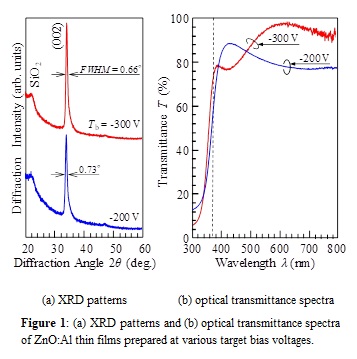
In this study, we tried to prepare ZnO:Al thin films with good crystallinity by helicon wave excited magnetron sputtering method and aimed to establish conditions for preparation. ZnO:Al thin films prepared by this method were evaluated for crystallinity, optical transmittance, and thickness by X-ray diffraction (XRD), recording spectrophotometer, and stylus surface profiler.
Figure1 shows (a) XRD patterns and (b)optical transmittance spectra of ZnO:Al thin films prepared at various the target bias voltages. RF power, substrate temperature, and deposition time were 400 W, 200 ℃, and 3 hours, respectively. ZnO:Al thin film prepared at -300 V exhibited the wurtzite structure (α-ZnO), optical absorption edge of 360 nm (3.37 eV) and good optical transparency
Yu-Shan Lee
National Chi Nan University, Republic of China
Title: MSE-08: Characterizations of ZnO nanorods and ZnO/ZnS core/shell nanorods on copper grids

Biography:
Yu-Shan Lee is a graduate student at National Chi Nan University from Taiwan and her research focus is on nano-materials. She has researched methods of growing nanorods on different substrates since she was a collage student. Owing to improvements of material properties of nanostructures novel fabrication of nanostructures may advance device technology, such as senor, panel, semiconductor and so on. In addition, she would like to acknowledge more academic researches by attending this conference. It is possible to inspire her to do more in depth investigation.
Abstract:
Zinc oxide is a n-type semiconductor which has wide and a direct band gap of 3.37ev with large exciton binding energy of 60meV. In addition, ZnO is also accessible material, which has many applications, such as transductors, gas sensors, and optical devices. However, zinc oxide has large band gap, which contributes to the efficiency of photovoltaic devices. Thus, we incorporate ZnS into ZnO structures because zinc sulfide is able to modulate band gap.
In this study, we electroplate the ZnO seed layer to cover on the copper grid as the first step. Secondly, we adopt the hydrothermal method to grow the ZnO nanorods, and then prepare the solution of zinc sulfide to do the hydrothermal method for the second time. In order to characterize the material properties, several analytical methods such as FESEM, TEM, PL and so forth have been conducted. The TEM images indicate that ZnO nanorods are completely covered by ZnS layer. The Photoluminescence (PL) analysis illustrates that this nanocomposite materials contain good optical property. In this research, to conduct the TEM analyze directly, we attempt to fabricate ZnO/ZnS core/shell nanostructure on the copper grid.
This paper provides a simple three-step process to synthesize ZnO/ZnS core/shell nanostructure and also affords a possibility to apply to optical sensor, solar cell, gas sensor and so on.
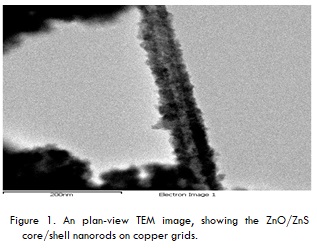
Ji Hyeon Choi
Kyungpook National University, Republic of Korea
Title: MSE-09: Fatty acid-based electrospun fiber for temperature-controlled drug release

Biography:
Ji Hyeon Choi is a first year master course student in polymer science and engineering at Kyungpook national university in Republic of Korea under professor Dong Choon Hyun. She received her B.S. degree in polymer science and engineering from the same university.
Abstract:
This paper explains fatty acid-based electrospun fibers for temperature-controlled drug release. The polymer fibers have core-sheath structure. Rhodamine B-loaded polymer particles are enclosed in the core while the sheath contains biodegradable polymer and mixture of fatty acids. The mixture consists of two fatty acids with different melting points. At a specific composition, the mixture represents a single melting point 38-40 oC which is slightly higher the normal human body temperature. This controllable melting of the mixture allows the temperature-regulated release of the dye from the fibers. Below its melting point, the mixture of fatty acids incorporated into the sheath will be in a solid state to restrict the passing of the dye molecules pre-loaded in the core whereas the molecules can be released instantly through the pores over the melting point. The release profiles of the dye molecules can be further manipulated by varying the amount of the mixture contained in the fibers.
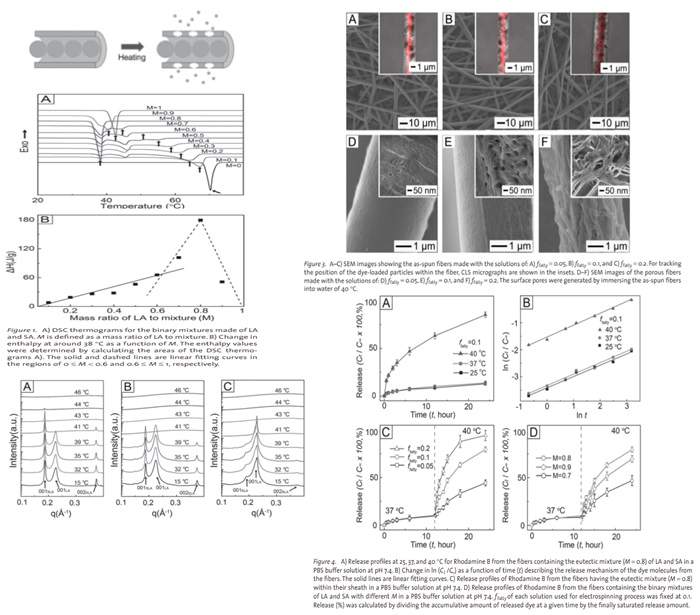
Ju Hyang Park
Kyungpook National University, Republic of Korea
Title: MSE-10: NIR light-triggered, localized anti-cancer drug delivery using poly(ε-caprolactone) (PCL) fibers incorporated with indocyanine green and phase-changeable fatty acid

Biography:
Ju Hyang PARK is a first year doctoral course student in polymer science and engineering at kyungpook national university in republic of korea under professor Dong Choon Hyun. She received her M.S. degree and her B.S. degree in polymer science and engineering from the same university. The topic of her PhD research is "smart drug delivery system using electrospinning.
Abstract:
This paper explains a new system for NIR light-triggered release of drugs. The system consists of poly(ε-caprolactone) (PCL)-based fibers having a core loaded with doxorubicin (DOX) and a sheath incorporated with indocyanine green (ICG) as a NIR-absorbing agent together with a phase-changeable fatty acid. Upon NIR irradiation, the photothermal agent will generate heat to raise the local temperature of the fibers. When the temperature is above the melting point of the fatty acid, nano-pores will be produced in the fibers. This response to NIR irradiation allows the instant release of DOX from the fibers through the pores, leading to the significant enhancement of anticancer activity in combination with the hyperthermia effect arising from the photothermal agent.
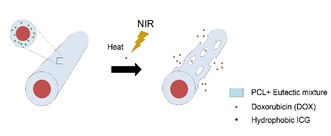
Yu-Chen Fa
National Sun Yat-sen University, Taiwan
Title: MSE-11: Chitosan-coated magnetic nanoparticles modified with folate use for doxorubicin released

Biography:
Yu-Chen Fa is studying in Institute of Medical Science and Technology, National Sun Yat-sen University. She will obtain a master's degree in June 2018. Her research focuses on the development of drug delivery devices, drug control release, remote delivery, tumor associated environment and tumor therapy. Yu-Chen Fa has her expertise in evaluation and passion in improving the clinical tumor therapy. She successfully designs a magnetic nanoparticle with low toxicity and using in tumor therapy. She also completed her research in localized photodynamic therapy to overcome multidrug resistance in breast cancer cells. The research results have been published in Bioconjugate Chemistry, 2017.
Abstract:
In clinical tumor therapy, chemotherapeutic routes have caused severe side effects; current delivery methods are unsatisfactory. Successful design of a remotely folate (FA)-grafted chitosan (CS)-coated magnetic nanoparticle (MNP) with low toxicity, has been achieved (Figure 1). A chemotherapeutic drug such as doxorubicin (DOX), is loaded in the MNP-based matrix (FA-grafted CS-DOX-TPP-MNP), which is coated by an activated target tumor molecule of FA-grafted CS biopolymer with the inclusion of tripolyphosphate (TPP) as a linker (Figure 2). The resultant nanocomplexes exhibited random aggregates (~240 nm) and zeta potential (− 24.9 mV) (Table 1). In vivo experiments using athymic BALB/c nude mice with human glioblastoma U87 cells in a subcutaneous tumor model revealed that magnetic guidance of FA-grafted CS-DOX-TPP-MNP, injected via the tail vein, significantly decreased tumor growth (Figure 3). This manuscript demonstrates the feasibility of magnetizing control of FA-grafted CS-DOX-TPP-MNP to enhance the localization of drug release.
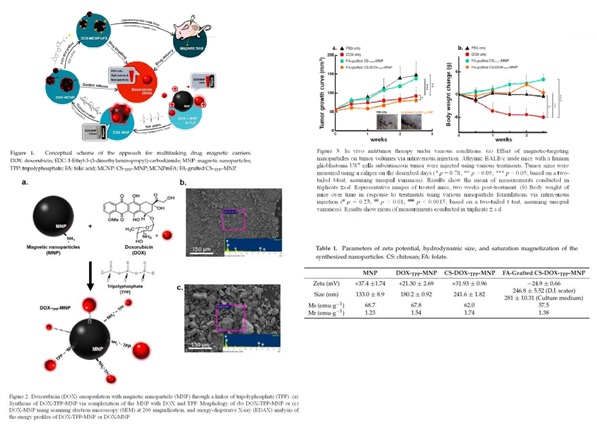
Tao-Tsung Shun
Feng Chia University, Taiwan
Title: MSE-12: Age heat treatments of the CoCrFeNiTi0.3 high-entropy alloy

Biography:
Tao-Tsung Shun received PhD degrees from University of Utah in Metallurgical Engineering at the age of 30 years. He had worked as a senior engineer for 3 years and a researcher for 10 years in Walsin Lihwa Stainless steel Co. and Industrial Technology Research Institute, respectively. Currently, he is an associate professor in the Department of Materials Science and Engineering, Feng Chia University, Taiwan. His present research interests are in developing ductile, high strength high-entropy alloys
Abstract:
Unlike traditional alloys constituted by one or two principal elements, the high-entropy alloys are constructed by at least multi-principal elements, each with concentrations between 5 at.% and 35 at.%. These alloys exhibit good wear resistance, thermal stability, and high-temperature compressive strength, which render them promising for use as tools, molds, die, and furnace parts. Previously, we proposed that the CoCrFeNiTi0.3 high-entropy alloy was promising for the development of a ductile, high-strength alloy owing to its high compressive stress of 1529 MPa and good fracture strain of 0.60. To further understand microstructure evolution as well as the age-hardening phenomena of this alloy, the effects of age heat treatments for 24-144 h at 500-1000 ˚C on the hardness and microstructure of as-cast CoCrFeNiTi0.3 high-entropy alloy were reported in this paper. The results showed that the as-cast alloy displayed a dendritic structure which dendrite was a Ti-lean face-centered cubic solid solution phase (FCC1) and interdendrite consisted of three phases including a Ti-rich face-centered cubic solid solution phase (FCC2) and a mixture of (Ni,Ti)-rich h phase and (Cr,Fe)-rich s phase. After 144 h aging treatment, age-hardening was apparently observed at temperature of 600-800 ℃due to the transformation of FCC2 phase to h+s phases. The optimum hardness was obtained at an aging temperature of 700 ℃which made the hardness increase from HV366 to HV508. However, age-softening occurred at 900-1000 ℃ due to the dissolution of h+s phases. The s phase completely dissolved into FCC1 matrix at 1000 ℃ which brought the alloy hardness to the minimum HV223.

Gi Hong Kim
Kyungpook National University, Republic of Korea
Title: MSE-13: Thermal, mechanical properties of modified poly (lactic-acid) / poly (butyleneadipate-co-terephthalate) blends

Biography:
Gi Hong Kim is a second year doctoral course student in polymer science and engineering at kyungpook national university in republic of korea under professor Kwan Ho Seo. He received his M. S. degree and B. S. degree in polymer science and engineering from the same university. The topic of his PhD research is “Modified PLA materials
Abstract:
Poly (lactic-acid) (PLA) and poly(butylene-adipate-co-terephthalate) (PBAT) are bio-based polymers which aid to replace petroleum-based polymers in future applications. In this study, Biodegradable PLA/PBAT blends were prepared with varying ratio of peroxide, isocyanate, and multi-epoxy groups by reactive blending. The effect of chain-extenders on the thermal behavior, mechanical properties and morphology of the modified PLA/PBAT blends were investigated. Peroxide and isocyanate chain extender were found to be more reactive to PBAT than PLA. But multi-epoxy chain extender was more reactive to PLA. The viscosity change of PLA/PBAT blends was significantly indicated when adding isocyanate or multi-epoxy chain extender whereas the tensile strength and elongation were improved with peroxide or isocyanate. As a result, the compatibility between the PLA and PBAT partially improved in the presence of the chain-extenders and thus it was confirmed that softening of PLA was possible.
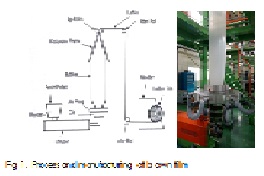
Jin Ho Son
Kyungpook National University, Republic of Korea
Title: MSE-14: Fabrication of poly(ε-caprolactone) (PCL) particles with non-spherical geometries via selective dewetting and deposition of the polymer

Biography:
Jin Ho Son is a first year master course student in polymer science and engineering at Kyungpook national university in Republic of Korea under professor Dong Choon Hyun. He received his bachelor’s degree in polymer science and engineering from the same university.
Abstract:
This paper explains a simple, inexpensive method for the fabrication of non-spherical polymeric particles. This method involves the use of a mechanical rubbing-assisted colloidal crystal to generate a substrate with an array of dimples on its surface, followed by selectively depositing a polymer into the dimples. As a proof-of-concept experiment, we demonstrated the fabrication of poly(ε-caprolactone) (PCL) particles with non-spherical shape. The shape of the polymer particles could be controlled from disk to hemisphere by changing the surface structure and property of the substrate and the concentration of the polymer solution. When functional components including drug molecules and inorganic NPs were used together with the polymer, we could easily obtain the non-spherical particles loaded with the components. In addtion, non-spherical particles with a hollow structure were formed with the use of immiscible polymer blend consisting of PCL and poly(ethylene oxide) (PEO).
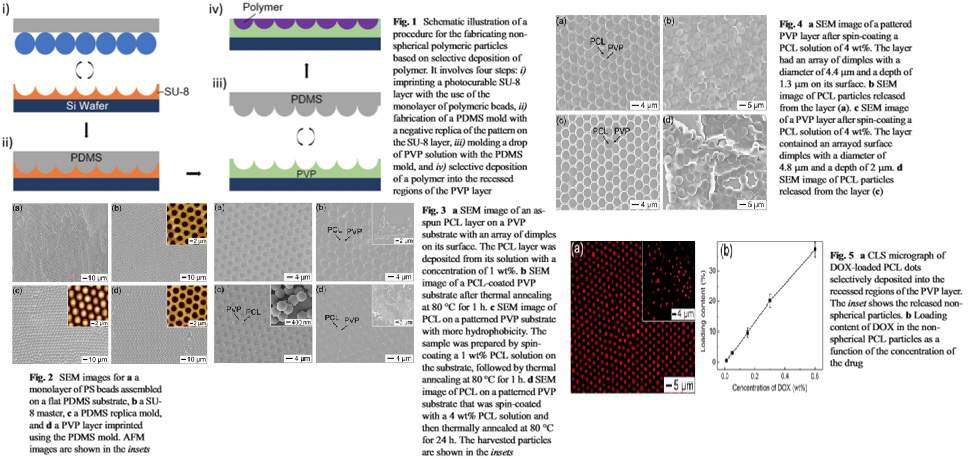
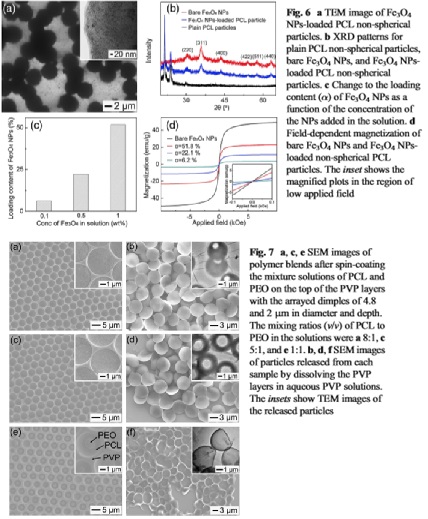
Daniela Rusu
LPIM - Université de Haute-Alsace, France
Title: MSE-15: Innovative superhydrophobic nano coatings for durable applications

Biography:
Daniela Rusu (M.Sci., Ph.D., HDR in Materials Science) is a Polymer Scientist at the Université de Haute-Alsace, Laboratoire de Photochimie et d'Ingénierie Macromoléculaires (LPIM), Mulhouse, France. Her research and teaching activities focuses on multiphase polymer systems (polymer blends, nanostructured materials, gels, composites…), in understanding the processing-structure-properties relationships and tailoring these complex polymer materials for targeted applications (biomedical applications, food packaging, transport, coatings…). Her current research focuses on advanced polymeric materials for coating and biodegradable polymers for medical and industrial applications. She co-authored 10 book chapters and over 100 articles on multiphase polymer systems in different peer-reviewed journals and proceedings. She is an active reviewer for peer-reviewed journals and a scientific expert for EU Framework Program Horizon 2020 for Research and Innovation.
Abstract:
Statement of the Problem: Nowadays, superhydrophobic surfaces (Figure 1) are a hot topic of coatings research, due to their water-repellent and self-cleaning potential, first observed on lotus leaves. Biomimetic artificial coatings intend bringing together the double/multiple roughness of the natural self-cleaning surfaces and a hydrophobic coating that could mimic the wax properties covering the lotus leaves. The roughness of the surface plays an important role in obtaining high contact angles (> 150°); otherwise, it is impossible to exceed angles of 120°. This work proposes an innovative method to produce durable superhydrophobic coating films with self-cleaning features.
Methodology & Theoretical Orientation: This method uses raspberry-like silica-modified nanoparticles (Figure 1) for texturing the substrate surface and it is particularly suitable for thermosensitive and/or transparent surfaces, since the temperature of the coating process remains below 100°C.
Findings: The method comprises several steps: (1) texturing the surface, via deposition of innovative silica-modified nanoparticles of different sizes, (2) crosslinking the textured surface, via a crosslinking agent, and optionally, (3) surface modification by hydrophobic molecules. The coating hydrophobicity can be enhanced by optimizing the preparation process. Preliminary coating tests on transparent substrates confirm the efficiency of the applied strategy: water droplets in contact with such a textured surface are almost spherical, indicating a Cassie-Baster state, where the liquid is in direct contact only with the upper points of the roughness and with air pockets trapped between the liquid and the lower roughness points of the solid coating.
Conclusion & Significance: An innovative strategy for preparing textured superhydrophobic surfaces was presented. This method is inexpensive and simple to apply and it is particularly suitable for industrial applications needing self-cleaning coating features applied on thermosensitive and/or transparent surfaces/materials.
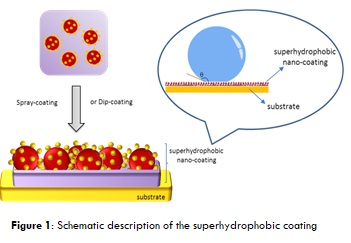
Christelle Delaite
LPIM - Université de Haute-Alsace, France
Title: MSE-16: Random poly (É›-Caprolactone-L-Alanine) by direct melt copolymerization

Biography:
Christelle Delaite is professor at the Université de Haute-Alsace, Laboratoire de Photochimie et d'Ingénierie Macromoléculaires (LPIM), Mulhouse, France. Her research and teaching activities focuse on macromolecular synthesis, (nano)composites elaboration and in the evaluation of the relationship between structure and physical properties of (co)polymers. This work is a collaboration with Slim Salhi who is assistant professor at the Université of Sfax, Laboratoire de Chimie Appliquée, Sfax-Tunisie. His research and teaching activities focuse on macromolecular synthesis, elaboration and characterization of amino-acid biosourced copolymers and chemical modification of polymers.
Abstract:
During recent years, many research works have been directed to the preparation of biodegradable and biocompatible polymeric materials with controlled chemical, physical, and biological properties for a wide range of biomedical applications in the fields of surgical implants, surgical sutures, artificial skin, resorbable bone plates, tissue engineering scaffolds and carrier system for controlled release of drogue and genes.
Various synthetic strategies can be used for the preparation of amino acid-based poly(ester amide)s (AA-PEAs)presenting block, alternating or random structures. Random PEAs can be prepared by simple procedures that do not require the use of solvents or expensive monomers like α-amino acid N-carboxyanhydrides (NCAs). Some studies have reported the synthesis of Random AA–PEAs by the direct reaction of amino acids with cyclic esters or by the direct bulk polycondensation of amino acids and α-hydroxyacids.
The aim of the present work is to study the synthesis and properties of random polyesteramides prepared by the bulk copolymerization of inexpensive É›-caprolactone and L-alanine, using a simple one-step procedure. A series of random polyesteramideswithin a range of molar composition from 90/10 to 50/50 were synthesized by a direct melt polycondensation. Their structure was fully characterized by FTIR and NMR spectroscopy. The resulting copolymers are completely amorphous with the exception of PEA-90/10 which possess a semi-crystalline structure. These PEAs present increasing glass transition temperatures at increasing L-alanine contents, and exhibit fairly good thermal stability with 10 % mass loss temperatures reaching 315°C.
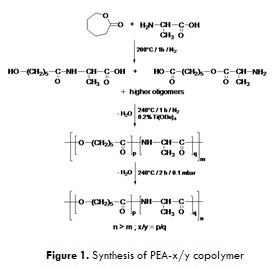
Jee-Woo Yang
Chungnam National University, South Korea
Title: MSE-17: Thermal and humid influence on the interfacial aging of polyurethane coated polyketone fabrics

Biography:
Jee-Woo Yang has her expertise in fiber reinforced composites She is working on improving the bonding performance of reinforcing materials and matrix of fiber reinforced composites. The results of the research on the thermal insulation properties of composite materials have been presented and the analysis model of aerogels also has been presented by her.
Abstract:
This study analyzed the effect of heat and moisture on the polyketone-polyurethane coating system and proposed a predictable relationship based on the analysis.
Polyketone is an environmentally friendly material because it uses carbon monoxide as a raw material and is inexpensive to produce. Also, it has excellent heat resistance, impact resistance, and chemical resistance, and thus is highly applicable to industrial fabrics such as waterproof fabric. On the other hand, polyurethane is a coating material excellent in abrasion resistance, weather resistance and oil resistance in addition to waterproofness. The waterproof properties of the waterproof fabric depend on the occurrence of defects on the coated surface and the adhesion strength between the coating and the fabric. The interfacial adhesion strength that can overcome external forces is determined by the bonding method and bonding force of the lamination system, which affects the life of the waterproof fabric.
In order to improve the durability of the waterproof fabric, polyketone fabric was used instead of the polyester or nylon fabric used in the past, and polyurethane generally used for waterproof coating was used. Environmental impacts, including temperature and humidity, affect the polyketone-polyurethane coating system from the fabric surface. Therefore, the surface properties were observed using SEM, and the hydrostatic head test of the fabric was used to determine the level of defect on the coated surface. Tensile and adhesion strength were tested to determine the mechanical properties of the coated fabric. The chemical changes after aging were qualitatively analyzed using FTIR, and the chemical changes of the polymer network by decomposition were measured from the results of weight reduction. The degree of damage due to the degradation of the coated surface was confirmed by weight loss value according to temperature, humidity and exposure time. The adhesion characteristics of polyketone - polyurethane coating system according to exposure environment were evaluated from the peeling strength results. Also, the behavior of adhesive force could be predicted.
In conclusion, we found that temperature, moisture, and exposure time affect the interfacial adhesion of polyketone-polyurethane coating systems, and the interrelationships were partially confirmed by analyzing the results.
Networking & Refreshment Break 16:30 onwards…@ Pre-Function Space
Day 2 Concludes....
